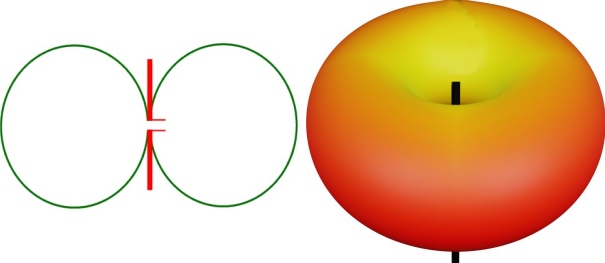Gain on a Vertical antenna?
A question from one of our students:
“I am reviewing the course work, RE antenna gain. I understand the torch theory for a beam, however, how does gain work on a vertical? My vertical claims 9.9 dB Gain. If I feed it with 10 watts this would mean it has 99 watts leaving the antenna?”
In theory, he’s right – if the antenna genuinely had a gain of almost 10dB, then in theory 10 watts in, would be 100 watts out.
In practice though, things are a little different!
The problem is that antenna manufacturers quote their measurements in dBi (decibels relative to an isotropic antenna). An isotropic antenna is not a real thing – it’s a theoretical antenna with zero gain floating in free space – the calculation is done using special antenna modelling software. In real life, it’s impossible to get the dBi gain from a real antenna once mounted in positioin.
Ofcom care about dBd (not dBi) when they talk about gain – this is dB relative to a half-wave dipole (not a theoretical antenna), and of course gain in dBd is less (and more realistic) than gain in dBi.
Manufacturers always want to make their antenna numbers look as good as possible, hence using dBi, but for a more accurate figure, you need to look at an antenna’s dBd value.
As for vertical antennas… yes, they do have a gain – the energy is pushed to the horizon (not much energy directly above or below. From the Foundation training material, the gain will have a pattern similar to this:

Want to know more? See dB vs dBi

